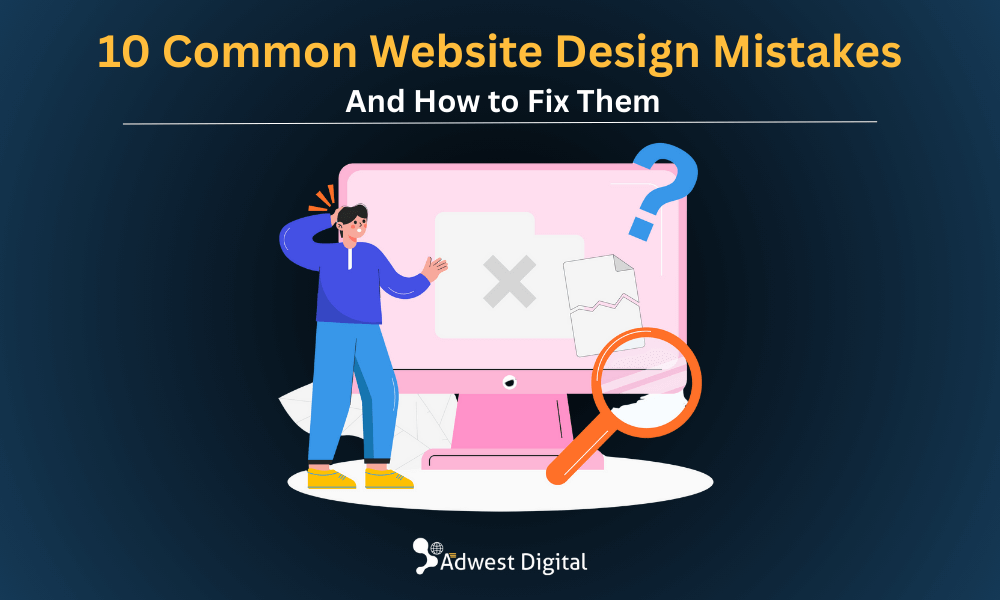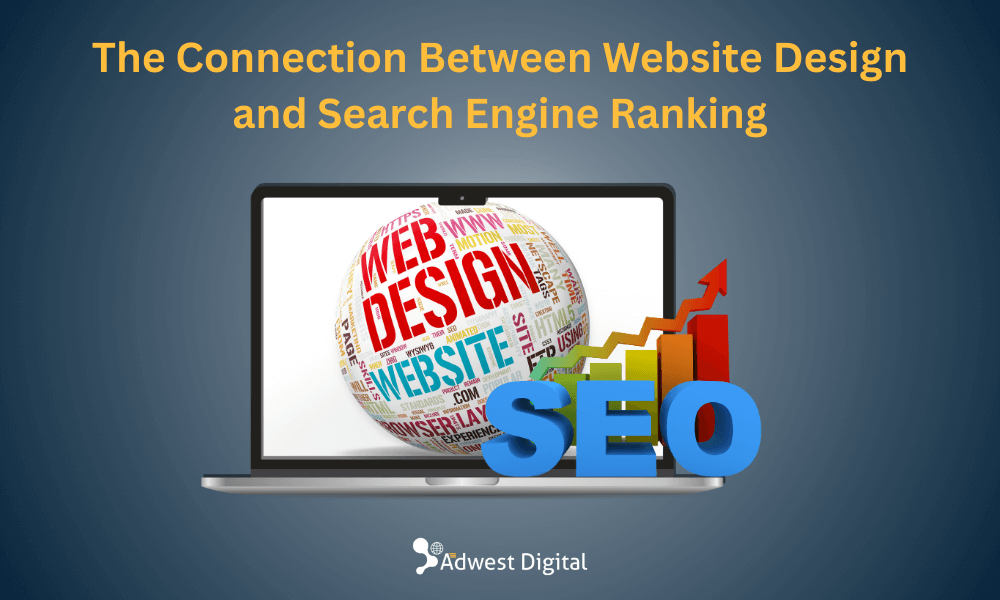Your website is often the first impression potential customers have of your brand. It acts as your digital storefront, portfolio, and round-the-clock sales representative. But even the most well-intentioned businesses make design mistakes that can cost them traffic, leads, and even search rankings.
Having worked extensively on website design, we’ve seen firsthand how small errors can lead to big performance issues. In this article, we’ll cover the 10 most common website design mistakes and share practical tips to help you avoid them, so your site not only looks stunning but also performs flawlessly.
1. Slow Page Loading Speed
Why it’s a problem: A slow website can frustrate visitors and send them straight to your competitor’s site. Plus, Google uses page speed as a ranking factor, so performance issues can hurt your SEO.
Common causes:
- Oversized images that aren’t compressed
- Too many scripts or third-party plugins
- Poor-quality hosting servers
How to fix it:
- Compress images using modern formats like WebP
- Implement a Content Delivery Network (CDN)
- Remove unnecessary plugins and scripts
- Invest in high-quality hosting with fast server response times
2. Not Mobile-Friendly
Why it’s a problem: With the majority of users browsing on smartphones, a site that doesn’t adapt to different screen sizes creates a poor user experience. Plus, Google uses mobile-first indexing, so a weak mobile design can tank your rankings.
How to fix it:
- Use a responsive design that works across all devices
- Test your site using Google’s Mobile-Friendly Test
- Make buttons and links easy to tap on smaller screens
- Avoid intrusive pop-ups that block key content
3. Disorganized Layout
Why it’s a problem: A messy, overcrowded page makes it difficult for users to focus and find information, leading to high bounce rates and low conversions.
How to fix it:
- Keep the design clean with ample white space
- Use a clear visual hierarchy to highlight key elements
- Limit font styles and color schemes to maintain consistency
4. Poor Navigation
Why it’s a problem: If visitors can’t find what they’re looking for in just a few clicks, they’ll leave. Confusing navigation also hurts SEO because crawlers struggle to index your site.
How to fix it:
- Use a simple, intuitive menu structure
- Add descriptive menu labels
- Include a search bar for large websites
- Ensure important pages are linked from the main navigation
5. Weak Content Placement
Why it’s a problem: Even great content won’t perform well if it’s hidden or hard to read.
How to fix it:
- Place key information and CTAs above the fold
- Use short paragraphs and bullet points for easy scanning
- Organize content with clear headings and subheadings
6. Inconsistent Branding
Why it’s a problem: Inconsistent colors, fonts, and tone across your site can make your brand look unprofessional and harm trust.
How to fix it:
- Create and follow a brand style guide
- Keep logo placement consistent across all pages
- Use brand-specific colors and typography
7. Ignoring Accessibility
Why it’s a problem: Accessibility ensures that your website is usable for everyone, including people with disabilities. It also improves SEO by making your site easier to understand.
How to fix it:
- Add alt text to all images
- Use proper heading structure (H1, H2, H3)
- Ensure strong color contrast for readability
- Offer keyboard navigation options
8. Lack of Clear Calls-to-Action (CTAs)
Why it’s a problem: If users don’t know what to do next, they won’t take action, whether it’s filling out a form or making a purchase.
How to fix it:
- Use clear, action-oriented CTAs like “Request a Free Quote”
- Position CTAs in high-visibility areas
- Keep CTAs short and benefit-driven
9. Overusing Stock Photos
Why it’s a problem: Generic images make your site feel impersonal and can reduce trust.
How to fix it:
- Use real photos of your team, office, or projects
- If you must use stock images, choose high-quality and relevant ones
- Customize images to align with your brand style
10. Ignoring SEO Best Practices
Why it’s a problem: Even the most beautiful website will fail if it’s not optimized for search engines.
How to fix it:
- Optimize title tags, meta descriptions, and headings
- Incorporate target keywords naturally into your content
- Create an XML sitemap for better crawling
- Ensure your website is secure (HTTPS)
Why Work with a Professional Web Design Team?
Avoiding these mistakes takes more than just design skills; it requires a deep understanding of user experience, SEO, and performance optimization. A professional design team can help you build a visually appealing, mobile-friendly, and search engine-optimized website.
What we focus on:
- Responsive, mobile-first designs
- Fast-loading, clean layouts
- SEO-integrated development
- Custom branding that reflects your business identity
Whether you’re a startup or an established enterprise, a well-designed website can drive traffic, improve engagement, and boost conversions.
Final Thoughts
Your website isn’t just an online presence; it’s a powerful business tool. By avoiding these 10 common website design mistakes, you can create a site that attracts visitors, keeps them engaged, and converts them into loyal customers.
If you’re ready to upgrade your website and make it work harder for your business, partner with a trusted website design company in Bangalore, India, one that truly understands design, usability, and SEO.
Subscribe
Get the latest blog updates directly in your inbox.


